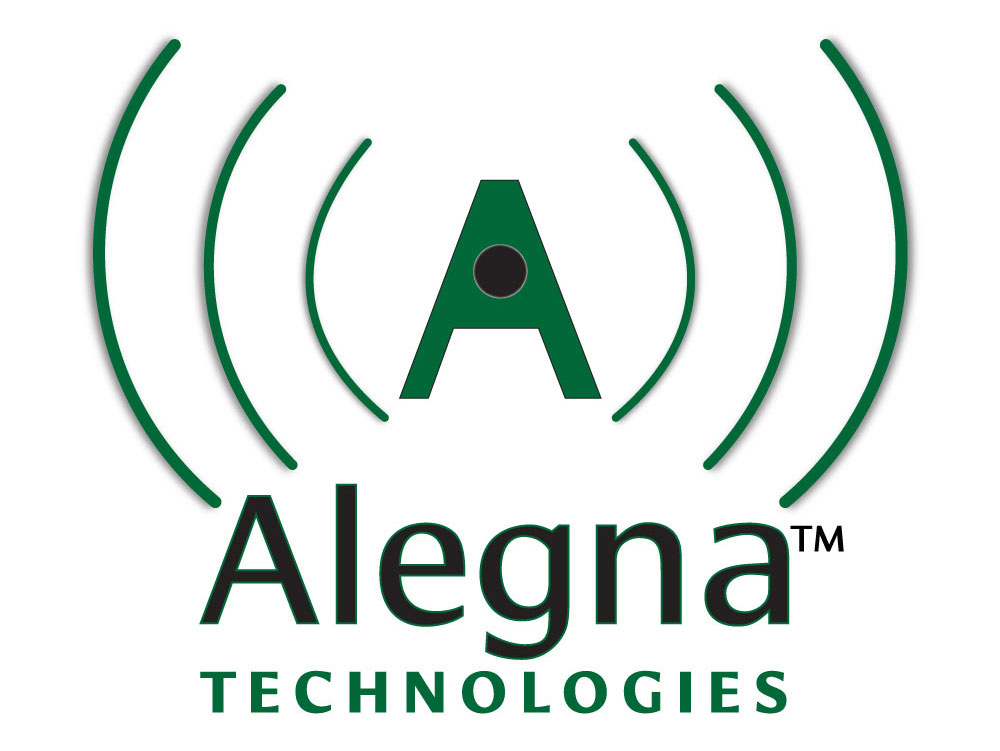UNDERSTANDING GOVERNMENT AGENCIES






Alegna Technologies has 25+ years of experience working with government agencies at all levels (federal, state, county, local). Alegna™ understands the challenges and specific requirements when engaging in doing business with government entities:
1. Government Procurement Process:
· Alegna™ is very familiar with the government procurement process, and how government agencies solicit, evaluate, and award contracts.
2. Regulations and Compliance:
· Alegna understands how government agencies operate within strict regulatory frameworks. Alegna™ ensures compliance with all relevant laws and regulations, including those related to contracting, labor, and environmental standards.
3. Certifications and Qualifications:
· Some government contracts may require specific certifications or qualifications. Alegna™ understands the relevance of diversity certifications and is certified as a Small, Minority Business Enterprise (MBE) and Women-Owned Small Business (WOSB) and (EDWOSB) by the Small Business Administration (SBA) and with the Department of Transportation in five (5) States (GDOT, FDOT, TDOT, SCDOT, ALDOT) as well as with other agencies.
4. Research and Market Intelligence:
· We conduct thorough research on government agencies and their procurement needs to stay informed about upcoming opportunities, trends, and changes in government priorities that may
affect the industry.
5. Registration and Documentation:
· Alegna™ is Registered with relevant government databases, such as the System for Award Management (SAM.gov) and ensures that all required documentation is accurate, detailed, and up to date.
6. Understanding Government Needs:
· Alegna™ tailors innovative technologies and cost-cutting required solutions and turnkey services to meet the specific needs of each government customer. Alegna’s Green Team strives to understand the language and requirements outlined in government solicitations to enable the delivery of projects on time and under budget.
7. Networking and Relationship Building:
· Alegna™ believes that Networking is crucial in the government contracting space. Alegna’s Team attends industry events to engage with government procurement officials to build strong and trustworthy relationships with key decision-makers.
8. Risk Management:
· Alegna™ assesses the risks associated with government contracts to clearly understand the potential challenges, such as delays in payment, changes in project scope, or regulatory hurdles.
9. Financial Management:
· Alegna™ understands how crucial it is to have the financial stability to handle potentially lengthy payment cycles associated with government contracts and aims to follow the invoicing and payment processes of each agency.
10. Quality and Accountability:
· Alegna appreciates Governments prioritize quality, transparency, and accountability. This is why Alegna™ and its expert Green Team have a strong commitment to delivering high-quality and latest innovative smart products, services, and solutions.
11. Subcontracting / Prime Opportunities:
· Alegna™ explores subcontracting opportunities with reputable primes to fulfill specific requirements within a contract. However, Alegna™ also has the capabilities to take the Prime role as related to its core competency.
12. Post-Award Management:
· Before Alegna™ secures a government contract, we ensure that we can effectively manage the project, meet contractual obligations, and maintain positive relationships with government customers.
By understanding these aspects and staying informed about the evolving landscape of government contracting, Alegna™ is well-positioned to successfully work with government entities.
WHAT ARE THE BENEFITS OF GOVERNMENT AUTOMATION?
Government process automation benefits employees and customers by cutting down on paperwork and eliminating tasks best suited to the digital background. This results in simpler and more secure processes, happier staff and customers, and a more efficient workflow system.
What is building automation?
Building automation is the use of automation and control systems to monitor and control building-wide systems, such as HVAC, lighting, alarms, and security access and cameras. Converging these systems into a single IT-managed network infrastructure creates a smart building.
What is the main objective of a building automation system?
The objective of a building automation system, or Energy Management System (EMS), is to achieve an optimal level of building HVAC system control and occupant comfort while minimizing energy use.
Alegna understands and develops custom automation solutions buildings, assets, management challenges of daily operations. Our innovative products using latest technologies and services help government agencies increase efficiency, improve data transparency, and reduce overall costs.
Alegna Technologies™ Smart sensors, meters, gateways, controls, communication devices, and turnkey services provide numerous benefits to government agencies across various sectors by enhancing efficiency, improving decision-making, and optimizing resource utilization. Here are several ways in which smart sensors can assist government agencies:
1. Infrastructure Monitoring:
· Smart sensors can be deployed to monitor the condition of critical infrastructure such as bridges, roads, and public buildings. They can detect structural issues, assess wear and tear, and provide early warnings for maintenance needs.
2. Environmental Monitoring:
· Sensors can track environmental parameters such as air quality, water quality, and noise levels. This information is vital for public health and environmental protection. Agencies can respond to pollution events, monitor climate changes, and enforce regulations more effectively.
3. Health, Safety and Security:
· Alegna’s Environmental Monitoring with Smart sensors will monitor workplace conditions, including air quality, temperature, and humidity. This ensures that occupational health and safety standards are met, and it helps prevent exposure to harmful conditions.
Building automation in the context of government facilities refers to the integration of smart technologies to control and manage various building systems. This can include HVAC, heating, ventilation, lighting, security, air quality, energy management, health and safety, and more. Implementing Alegna Technologies IoT and Smart Building Automation Solutions offers several benefits to government agencies:
Automating government agencies can bring about several benefits that contribute to increased efficiency, transparency, and overall effectiveness of public services. Here are some key reasons highlighting the importance of government agencies automating their processes:
1. Remote Access and Control:
- Alegna’s building automation provides remote access and control capabilities, allowing facility managers to monitor and adjust settings from anywhere.
This feature is particularly beneficial for government agencies with multiple facilities or during emergency situations.
2. Centralized Monitoring and Control:
- Alegna’s building automation allows for centralized monitoring and control of various systems, providing facility managers with real-time data and insights.
- Remote monitoring capabilities enable quick response to issues and more efficient facility management.
Alegna’s Automation systems are scalable and adaptable to changes in building requirements.
3. Environmental Sustainability:
Alegna’s Building automation supports government efforts to reduce carbon footprints and achieve environmental sustainability goals by optimizing energy usage and reducing waste.
4. Efficiency and Productivity:
- Alegna’s Automation reduces manual and repetitive tasks, allowing government employees to focus on more complex and strategic activities.
- Faster processing times for tasks such as data entry, document verification, and information retrieval lead to quicker service delivery.
5. Energy Efficiency:
- Alegna’s Building automation systems optimize energy consumption by regulating lighting, HVAC, and other systems based on occupancy, usage patterns, and external conditions.
- Energy-efficient buildings lead to cost savings and support government initiatives for sustainability and environmental responsibility.
6. Cost Savings:
- Alegna’s Automation can lead to significant cost savings through better energy management, and reduced maintenance costs while increasing operational efficiency
- Alegna’s Early Warning Remote Predictive Maintenance capabilities can identify potential issues before they become major problems, minimizing downtime and repair expenses.
- Streamlining processes can minimize errors and costly rework, ultimately saving taxpayer money.
7. Improved Accuracy and Compliance:
- Automated systems are less prone to human errors, ensuring greater accuracy in data processing and decision-making.
- Alegna’s automation helps ensure that government agencies comply with regulations and policies consistently.
8. Enhanced Transparency:
- Automated systems can provide real-time access to information, fostering transparency in government operations.
- Authorized stakeholders can access relevant data, promoting accountability and trust.
9. Data Security:
- Automation allows for the implementation of robust security measures, protecting sensitive information from unauthorized access and breaches.
- Alegna’s automated system includes bank-like secured encryption, access controls, and audit trails to ensure data integrity and confidentiality.
10. Enhanced Security:
- Alegna’s Integrated security systems within building automation include surveillance, access control, and alerts via text, email, and call with data collected in real-time and immediately accessible, 24/7.
- Real-time monitoring and automated responses enhance the security of government facilities, safeguarding both personnel and sensitive information.
- Data can be shared to a 3rd party platform via APIs or by polling the data via Modbus TCP or SNMP. 3rd party devices can be integrated into the system if there is a physical output (voltage, current, dry contact, etc). On the 3rd party device.
11. Corporate Anti-Hacking Security
- Alegna’s sensor-to-gateway, secure wireless tunnel, Encrypt-RF?, is generated using ECDH-256 (Elliptic Curve Diffie-Hellman) public key exchange to generate a unique symmetric key between each pair of devices.
- Alegna’s proprietary operating system and smart platform uses 256-bit ECDH data encryption from sensor to gateway, multifactor authentication, and hardwired TCP stack from the gateway to the software.
- Alegna’s proprietary sensor protocol uses very low transmit power and requires specialized radio equipment to operate. Typical wireless devices that run on non-proprietary communication protocols (Wi-Fi, Bluetooth, Zigbee) operate using different frequency bands, so you can’t use them to eavesdrop on the radio communications from Alegna’s family of sensors.
- Alegna’s products use encrypt-RF® bank-level security, featuring a 256-bit exchange to establish a globally unique key, and an AES-128 CTR for all data messages.
- Alegna™ uses a robust packet tampering evaluation routine to ensure that traffic isn’t altered between the sensors and the gateways. This enables us to check for well-formed data packets that only originate from Alegna-enabled devices.
- Alegna™ algorithms protect against spoofing and re-transmission of wireless data packets to safeguard data further. This is included with the best-in-class range and power consumption protocol developed for Alegna wireless sensor systems.
12. Better Decision-Making:
- Alegna’s automated data analysis and reporting tools can help government agencies make informed decisions based on accurate and up-to-date information.
- Remote Early Warning Predictive analytics and machine learning can identify patterns and trends, assisting in proactive decision-making.
13. Data-Driven Decision-Making:
- Alegna’s automation generates valuable data on building performance, energy usage, and system efficiency.
- Analyzing this data enables informed decision-making for optimizing operations, reducing costs, and planning for future improvements.
14. Improved Comfort and Productivity:
- Automation systems can create a more comfortable and productive work environment by regulating temperature, lighting, and air quality.
- A comfortable workspace contributes to increased employee satisfaction and overall productivity.
15. Adaptability to Change:
- Automated systems are often more adaptable to changes in regulations, policies, or operational requirements, allowing for easier updates and modifications.
- Government agencies can respond more quickly to emerging challenges and opportunities.
16. Streamlined Communication:
- Alegna’s automation can facilitate improved communication both within government agencies and between agencies and chosen others.
- Alegna’s real-time automated communication systems can enhance information flow.
17. Regulatory Compliance:
- Building automation systems can help government agencies comply with energy efficiency standards, environmental regulations, and safety codes.
- Automated reporting features simplify the process of demonstrating compliance with relevant regulations.
18. Disaster Response and Recovery:
- Automated systems can play a crucial role in disaster management, helping coordinate emergency response efforts and facilitating the rapid distribution of resources.
- Automation ensures quick access to critical information during crisis situations.
In summary, Alegna Technologies™ automation of government agencies brings about efficiency gains, cost savings, improved services, and increased transparency, ultimately contributing to a more responsive and accountable government.
By leveraging Alegna’s smart sensors, government agencies can enhance their operational capabilities, make data-driven decisions, and deliver better services to the public. Implementing building automation in government facilities will lead to a more sustainable, cost-effective, and secure infrastructure while promoting a healthier and more productive work environment for government employees.
